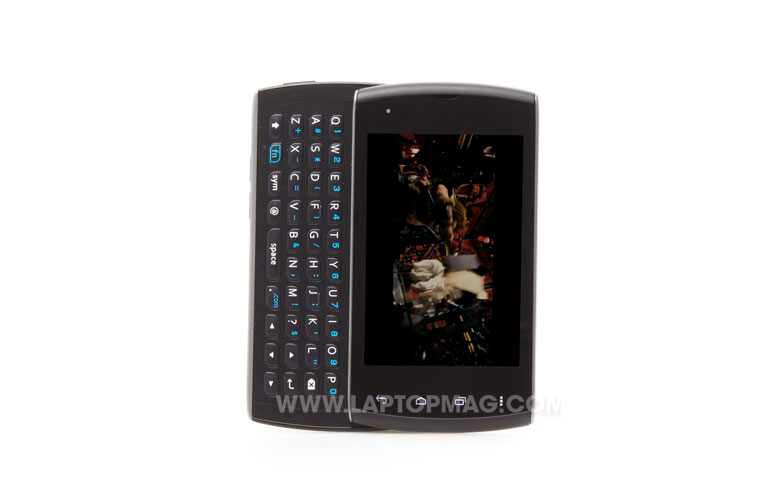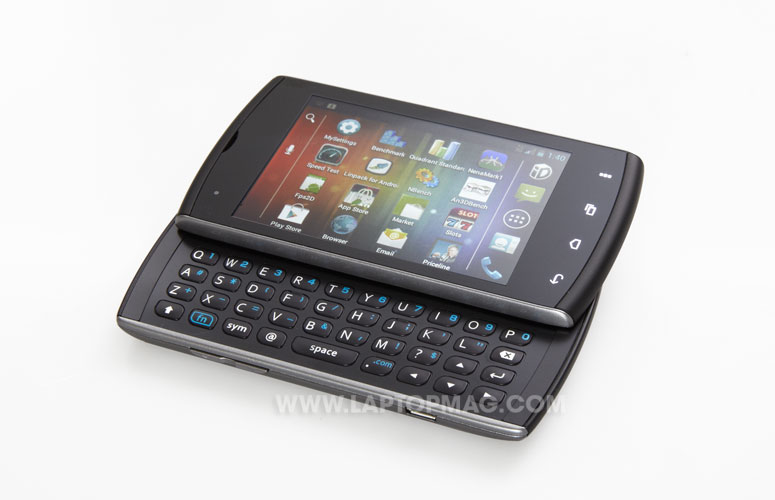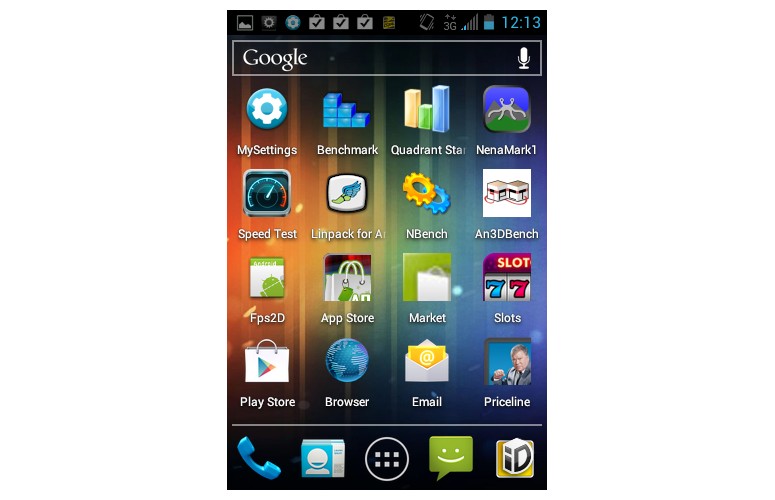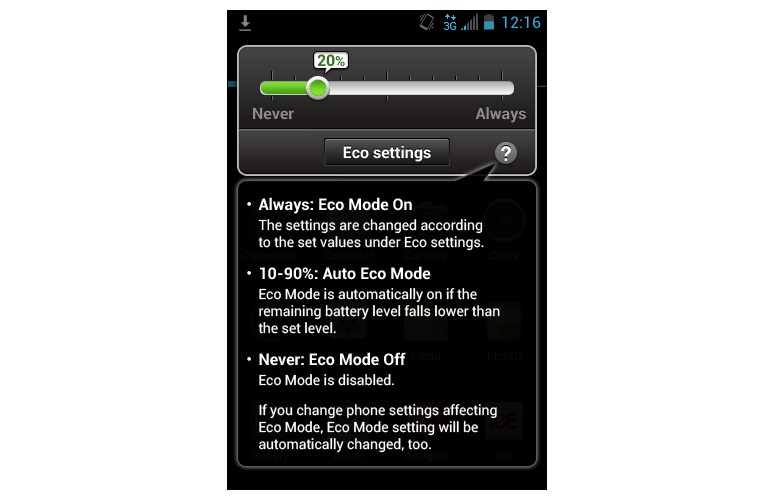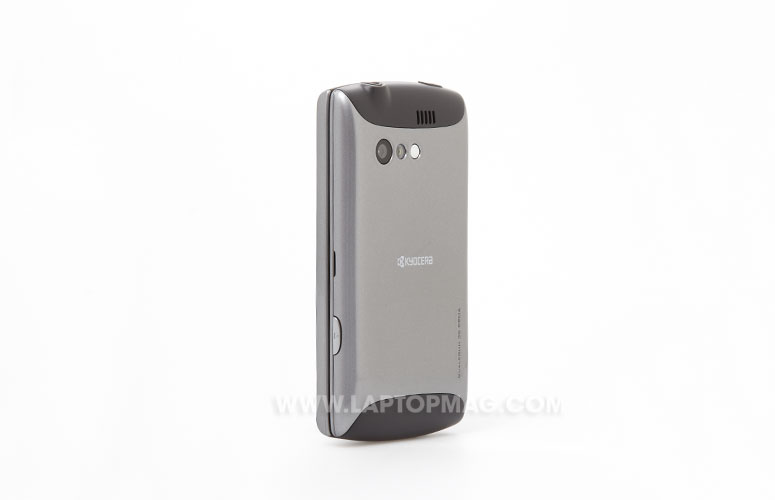Laptop Mag Verdict
The Kyocera Rise offers Android 4.0 and a comfortable physical keyboard for just $20, but the low-res display and short battery life are turnoffs.
Pros
- +
Stock Android 4.0
- +
Comfortable physical keyboard
- +
Very affordable
- +
Good call quality
Cons
- -
Small, dull display
- -
No 4G
- -
Poor battery life
- -
Mediocre camera
- -
Pricier overall than Virgin Mobile version
Why you can trust Laptop Mag
At first glance, the $19.99 Kyocera Rise seems like too good of a deal to pass up. This Android Ice Cream Sandwich handset features a full QWERTY keyboard and decent performance at a bargain basement price. However, given the trade-offs involved, you'll want to think long and hard before making that two-year commitment.
Design
Click to EnlargeThe Rise has a retro look that harkens back to old flip phones. The sides of the device are lined in glossy gunmetal plastic. The top and bottom are noticeably rounded and lined with matte, soft-touch plastic.
The 3.5-inch display on the front of the device is surrounded by a thick black glossy bezel. Four capacitive buttons (Back, Home, Recent Apps and Menu) sit along the bottom of the bezel. Kyocera decided against adding a front-facing camera, an omission that's understandable given the low price--and the lack of 4G.
Click to EnlargeSliding the front panel up reveals a full QWERTY keyboard in a black matte plastic deck. The leaf-shaped keys are appealing to the eye as is the electric blue lettering of the special characters.
The majority of the Rise's rear panel is swathed in glossy gray plastic. The top and bottom panels are panels are lined with more black rubberized plastic. A 3.2 megapixel rear-facing camera, LED flash and mirror sit along the top of the panel above a white Kyocera logo. While the plastic paneling doesn't feel cheap, it is very slippery. We wished the sides of the phone were lined with soft-touch plastic for a better grip.
Click to EnlargeThe power button and a headphone jack can be found on top of the rear panel. A dedicated camera button sits on the right while a volume rocker and microUSB port are housed on the left.
Sign up to receive The Snapshot, a free special dispatch from Laptop Mag, in your inbox.
The 5.5 ounce device slid easily into our pants pocket. However the bulky 4.4 x 2.4 x 0.6-inch frame made a noticeable, unsightly bulge.
Display and Audio
Click to EnlargeThe Rise's 3.5-inch IPS 480 x 320-pixel display is small compared with most Android phones. As we surfed the Web, the screen looked rather dull and lacked sharpness. On CNN.com, the picture of the Obama family was very grainy, with each person in the photo sporting their own fuzzy halo. Text on Joystiq was also fuzzy around the edges.
Colors on "Man with the Iron Fists" trailer were rather muted. We had difficulty distinguishing reds from pink in the pagoda scene.
The 343 lux display also fell short of the 380 lux Android phone category average. On the plus side, viewing angles were pretty wide, allowing us to watch the trailer in a variety of angles without significant washout.
The Kyocera Rise delivered loud, clear audio from its rear-mounted speaker. The audio easily filled our small test room and offered crisp dialogue during "Man with the Iron Fists." As we listened to Jamiroquai's "Cosmic Girl," the synthesized instrumentals melded perfectly with lead singer's Jason Kay's distinctive tenor.
Keyboard
Click to EnlargeWe really like the Rise's physical keyboard. The full QWERTY layout with gel-filled keys offered nice, springy feedback. The keys are a decent size and easy to read. The direction keys and space bar are nice touches, but it would have been nice to get a tab and a shift button similar to the Motorola Photon Q 4G LTE.
The handset also features a stock Android virtual keyboard and a Swype keyboard, complete with strong haptic feedback. Keys on the Swype keyboard are long and closely spaced, perfect for tracing out a message.
Click to EnlargeThe Android keyboard offers a bit more spacing for quick thumb typing. Both keyboards also provide access to secondary characters via long-pressing a primary key. Unlike the Photon Q, virtual keyboards can be used in portrait and landscape mode.
Software and Interface
Android purists will find plenty to love on the Kyocera Rise. With a few minor exceptions, the phone shows off Android 4.0 (Ice Cream Sandwich) in all its understated glory. A large digital clock sits on the lockscreen. Instead of a sliding lockscreen, there are icons for lock and camera that you flick upward to activate.
The Rise has five customizable homescreens. A thin light bar near the bottom of the display separates the omnipresent icons (Phone, Contacts, Apps, Messaging and Sprint ID) along the bottom and the rest of the display. A small blue line within the bar shows which page the user is on.
Click to EnlargeHitting the center Apps button takes you to the App/Widget page, where apps are arranged in a 4 x 4 grid. Scrolling through the pages takes you to the Widgets section, where customizable widgets are featured on a 2 x 3 grid.
Users that need a little variety can use Sprint ID to spice things up. Sprint ID features a number of ID packs that come bundled with their own skins and apps. For example, downloading the Fantasy Football pack adds a pigskin wallpaper, as well as apps for SportsCaster, CBS Sports Pro Football and Yahoo! Fantasy Football '12.
Apps
Click to EnlargeAside from a pair of carrier-branded apps (Sprint Zone and Sprint ID), the Rise offers a slew of Google-branded apps (Maps, Play, Talk, Google+ and Google+ Messenger). Kyocera included its energy-saving Eco Mode app. Using the app, we could set display brightness, the sleep timer as well as toggle haptic feedback, auto-sync and auto-rotate.
Third-party apps include YouTube and ICE, which allowed us to create In Case of Emergency contacts.
Performance
Click to EnlargePowered by a single-core 1-GHz Qualcomm MSM8655 processor with 512MB of RAM, the Kyocera Rise's performance didn't wow. We navigated quickly between apps and menus. However, when we started playing "Blood & Glory: Legend," there was noticeable stuttering in both the game and when we tried to go back to the home screen.
On the CPU portion of the Benchmark app, the Rise scored 2,060, which is lower than the 2,645 category average and the 2,931 turned in by the faster 1.4-GHz CPU inside the $49 myTouch Q on T-Mobile.
When we ran An3DBench graphics test, the Rise notched 7,275. That showing tops the 6,996 average but was a bit behind the myTouch (7,397).
The Kyocera Rise comes with 2GB of onboard storage that can be expanded to 32GB via the microSD card.
3G and Web Browsing
Those searching for 4G or 4G LTE speeds should look elsewhere; the Kyocera Rise is firmly rooted in the land of 3G. When we ran Speedtest.net test, the Rise delivered an average of 710 Kbps downloads and 610 Mbps upload speeds.
At least the device managed to load mobile sites in a decent amount of time. Loading the mobile versions of NYTimes.com, ESPN.com and CNN.com took 4.3, 7.9 and 8.5 seconds, respectively. The desktop version of Laptopmag.com took considerably longer at 33.7 seconds.
Camera
Click to EnlargeThe 3.2 megapixel rear-facing camera on the Rise was quite a letdown. The colors from our test shots were consistently faded and the details were often fuzzy. We could barely make out the dark inner disc flowers from our sunflower shots. The usually vibrant yellow came back rather pallid. The 800 x 480-pixel videos we captured were equally disappointing, with a dark backdrop and grainy details.
[sc:video id="xsdjRqcTog4psd4D2bnCAtTIbXNk0TBl" width="640" height="410"]
Call Quality
Making calls with the Rise was a pleasant experience. The handset delivered satisfying results across the board on Sprint's network. Callers on landlines and mobile devices reported clear, loud audio in indoor and outdoor settings. There were only a few instances of distracting background noise. Calls were nice and crisp on our end, although our voice echoed on some mobile-to-mobile calls.
Battery Life
Click to EnlargeDuring the LAPTOP Battery Test (continuous Web surfing via 3G), the Kyocera Rise lasted a disappointing 3 hours and 30 minutes. That's 2 hours and 3 minutes below the 5:33 Android phone average.
Plans and Value
The Kyocera Rise's $19.99 price tag seems like a steal--before the cost of a two-year plan is factored in. Sprint offers two flavors of its unlimited data plan. The $109.99 version offers unlimited talk, text and data and adds up to a whopping $2,659.75 after two years plus the cost of the phone. The $99.99 version delivers 900 Anytime minutes and costs $2,419.75 over two years, while the $79.99 plan has 450 Anytime minutes and comes to a grand total of $1,939.75.
Virgin Mobile, by comparison, offers the Rise for $99.99 with a $55 no-contract unlimited everything plan, which translates to $1,419.99 over 24 months. That's a savings of $519.76 compared with Sprint's $79.99 plan.
Verdict
Click to EnlargeWe'll take a pass on the Kyocera Rise. While this phone features Android 4.0 and a full QWERTY keyboard, there's not much else to get excited about. Yes, the $19.99 up-front price is cheap, but after that, you'll be stuck with a device that has a low-res display and short battery life. If you can live without 4G and really want a slider Android phone on the cheap, you'd be better off purchasing this device on Virgin Mobile, where you'll save a lot more over the long run.
- Top 10 Smartphones Available Now
- How to Buy a Smartphone
- 7 Worst Smartphone Injustices and How to Fight Them
Kyocera Rise Specs
| Bluetooth Type | Bluetooth 2.1 EDR |
| Brand | Kyocera |
| CPU | 1-GHz Qualcomm MSM8655 |
| Camera Resolution | 3.2 MP |
| Carrier | Sprint |
| Company Website | http://www.kyocera-wireless.com/ |
| Data | EV-DO Rev. A |
| Display (main) | 3.5 inches |
| Form Factor | QWERTY Slider |
| Front Camera Resolution | none |
| Internal Memory | 2GB |
| Memory Expansion Type | microSD Card |
| Networks | CDMA |
| Operating System | Android 4.0 |
| Ports | microUSB, 3.5mm headphone |
| RAM | 512MB |
| Size | 4.44 x 2.38 x 0.56 inches |
| Talk / Standby Time | 8.6 hours |
| Weight | 5.54 ounces |
| Wi-Fi | 802.11b/g/n |

Sherri L. Smith has been cranking out product reviews for Laptopmag.com since 2011. In that time, she's reviewed more than her share of laptops, tablets, smartphones and everything in between. The resident gamer and audio junkie, Sherri was previously a managing editor for Black Web 2.0 and contributed to BET.Com and Popgadget.



